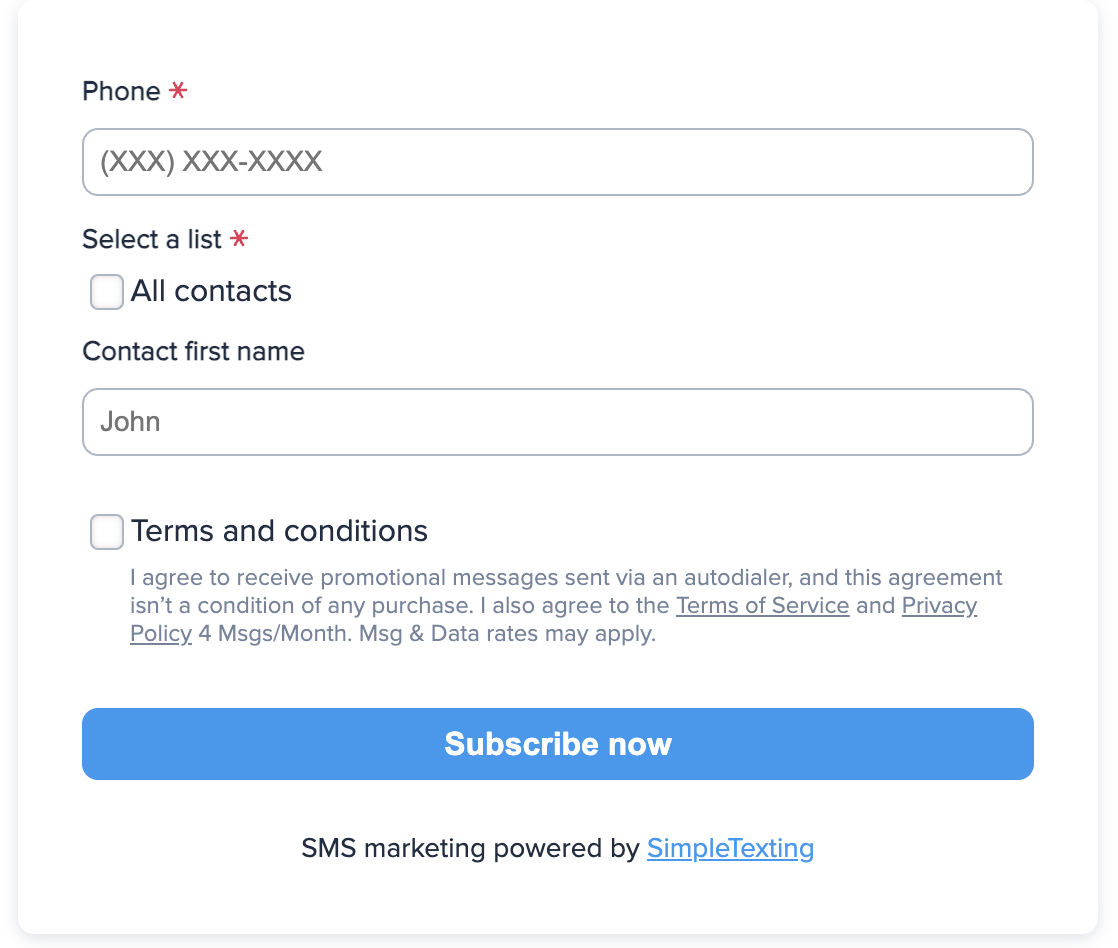
The call to action to join your SMS subscriber list must include terms and conditions. This can be the full text or a link to the terms and conditions in full.
Nathan Ojaokomo wrote inAs a business owner using text or SMS messaging, several organizations and laws require you to have a terms and conditions document in the call to action to opt into to your text list. Your texting terms and conditions document sets expectations and guidelines for your contacts’ SMS interactions with your business.
If your SMS service were a country, the terms and conditions document is the constitution.
How, though, do you create an SMS terms and conditions document for business texting? And why is it crucial to have one?
This guide will answer your questions and show real-life examples of text messaging terms and conditions that can inspire you. You’ll also get a template to help you get started.
⚠️ This advice is for informational purposes only and is neither intended as nor should be substituted for consultation with appropriate legal counsel and/or your organization’s regulatory compliance team.
SMS terms and conditions are a legally binding contract that sets the rules and guidelines for an SMS or texting campaign, including the service providers’ and customers’ responsibilities.
These terms and conditions set the tone for the relationship between you, running an SMS campaign, and your contacts, receiving your messages.
Other phrases that can be used interchangeably to describe terms and conditions are “terms of service” and “terms of use.”
For an SMS terms and conditions document to be legally binding, contacts must understand what it means before accepting to sign it. It must also be legally valid in your territory or country.
While there’s no one-size-fits-all format for texting terms and conditions documents, it should include some key components.
Here are the mandatory elements you must include in your SMS compliance terms and conditions.
Note: SimpleTexting automatically generates a terms and conditions document for you when you use our provided Web Forms (so you don’t need to do this yourself — we got you). However, if you collect contacts through other opt-in methods, you’ll need to include a link to these terms and conditions.
According to the Cellular Telecommunications Industry Association (CTIA) short code monitoring handbook, you’re expected to provide a link to your complete terms and conditions under the opt-in call to action.
Here’s an example of what that might look like.

The CTIA requires that your terms and conditions contain a program name, which is often your brand or product name.
“The program name is the sponsor of the Short Code program, often the brand name or company name associated with the Short Code. The product description describes the product advertised by the program.”
Mention the number of messages your contacts can expect to receive from you.
Include a link to customer support so your contacts can reach out if they need help with anything.
Explain how your customers can opt out of receiving your SMS marketing messages.
Mention the costs or fees a customer might incur if they send messages to you. This is usually known as “message and data rates may apply” disclosure.
Let your contacts know if your campaign will include you sending abandoned cart messages.
Add a privacy policy link so your contacts know how you collect, store, and use their data.
SimpleTexting provides a standard terms and conditions document for its customers. This section will show you what that looks like in the Web Forms feature.
You can use this process to copy the link and paste it in your custom forms, if applicable, to make sure you remain compliant. Or you could copy/paste and modify the SMS compliance terms and conditions language provided here within your website’s comprehensive terms and conditions.
Again, we’re not your lawyers, so we highly recommend seeking legal counsel before starting your SMS program and modifying items as important as your terms and conditions.

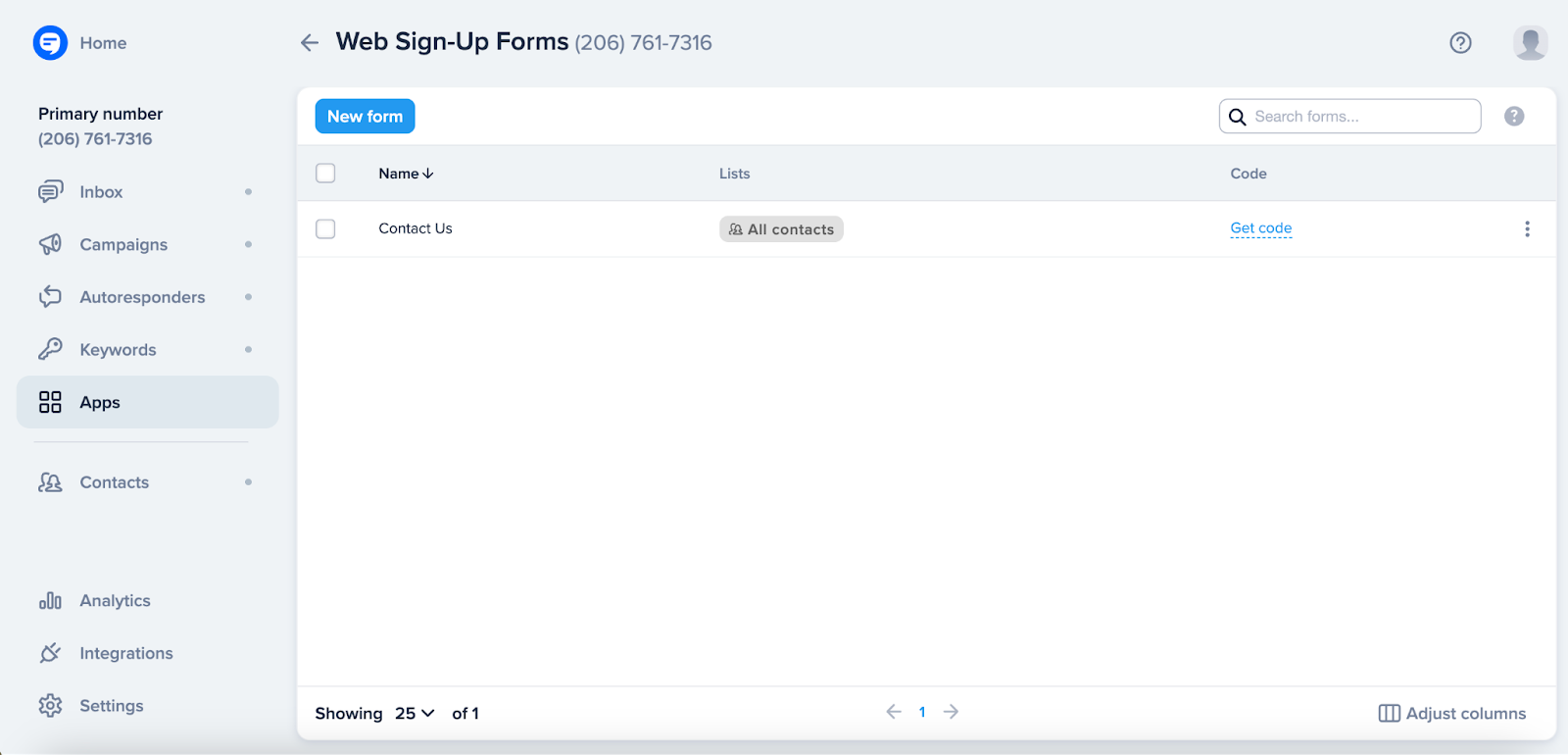
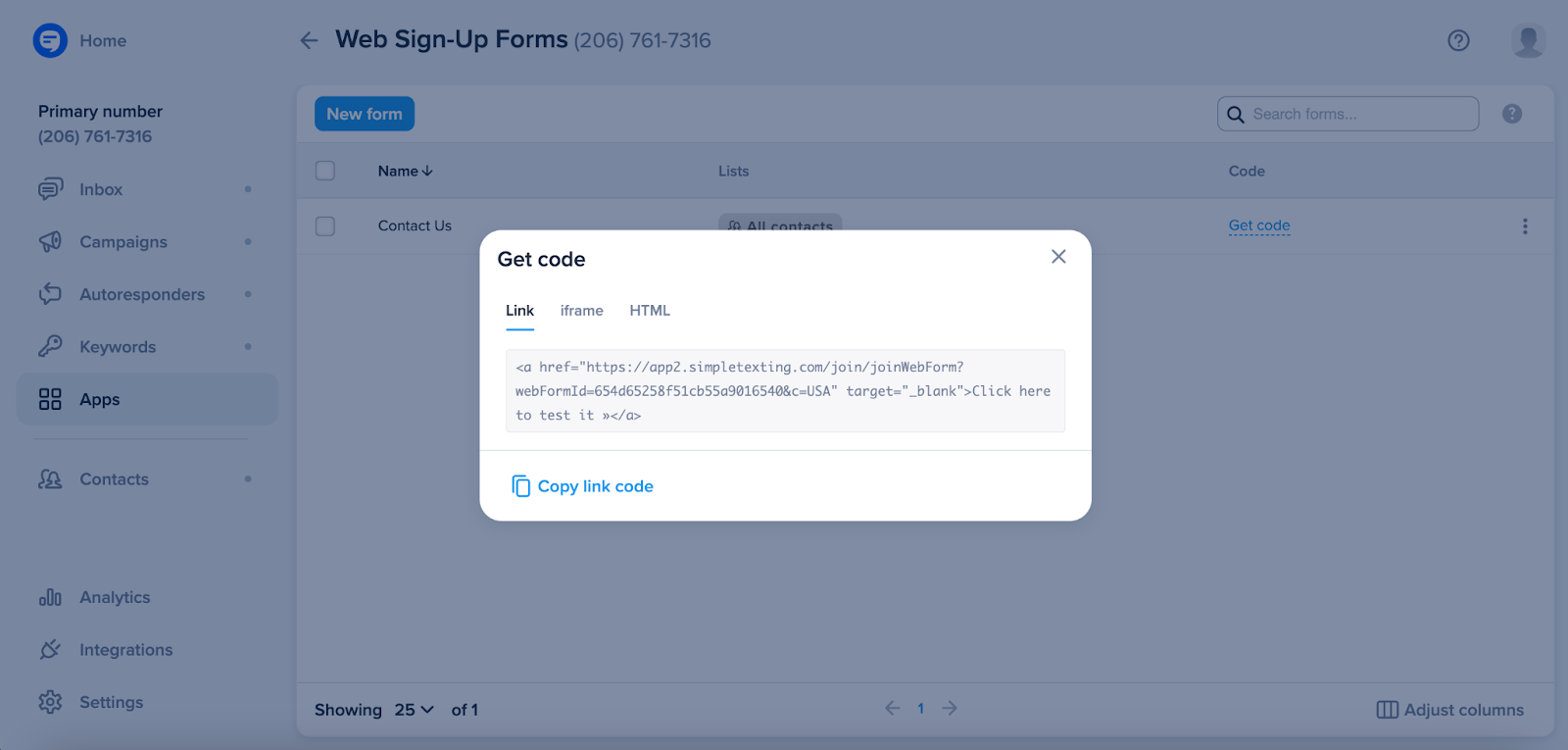

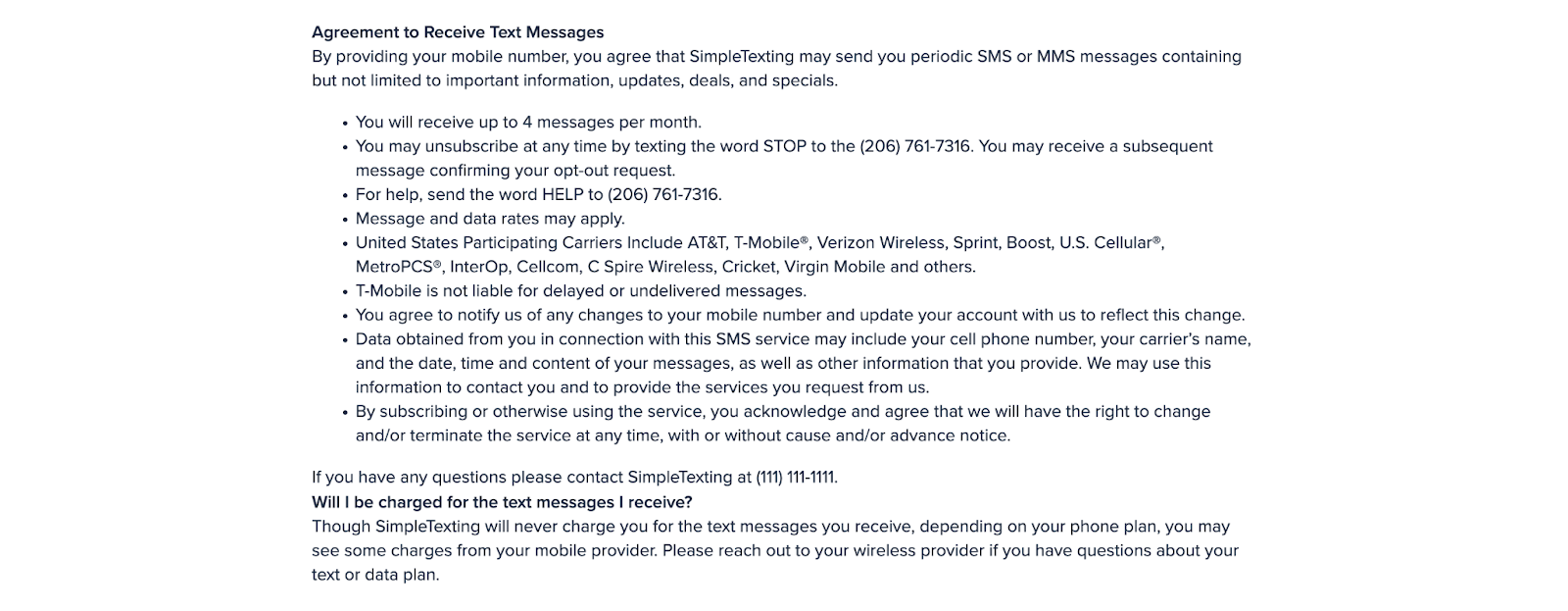
Looking for some real-life SMS compliance terms and conditions examples? Here are some.
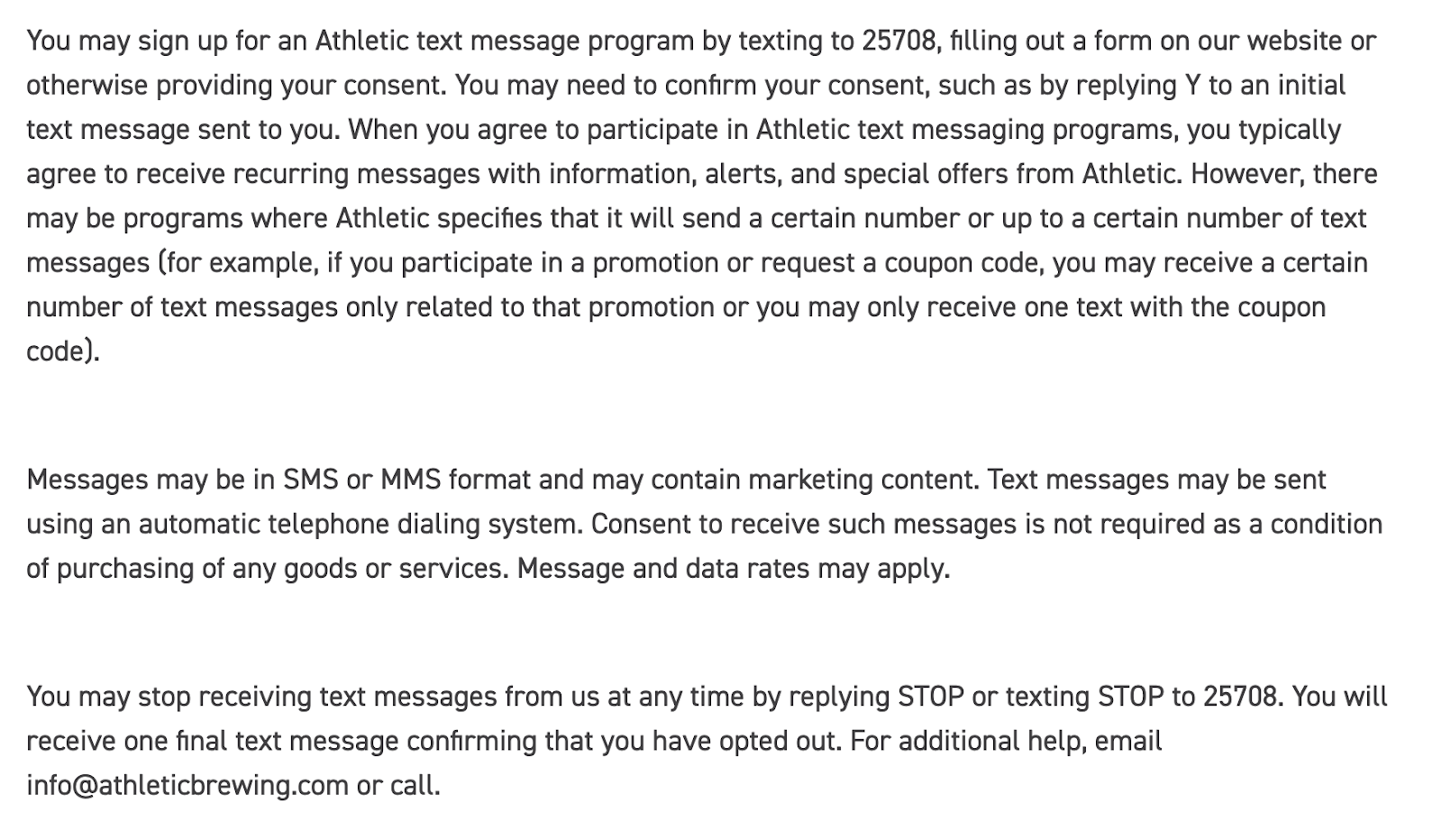
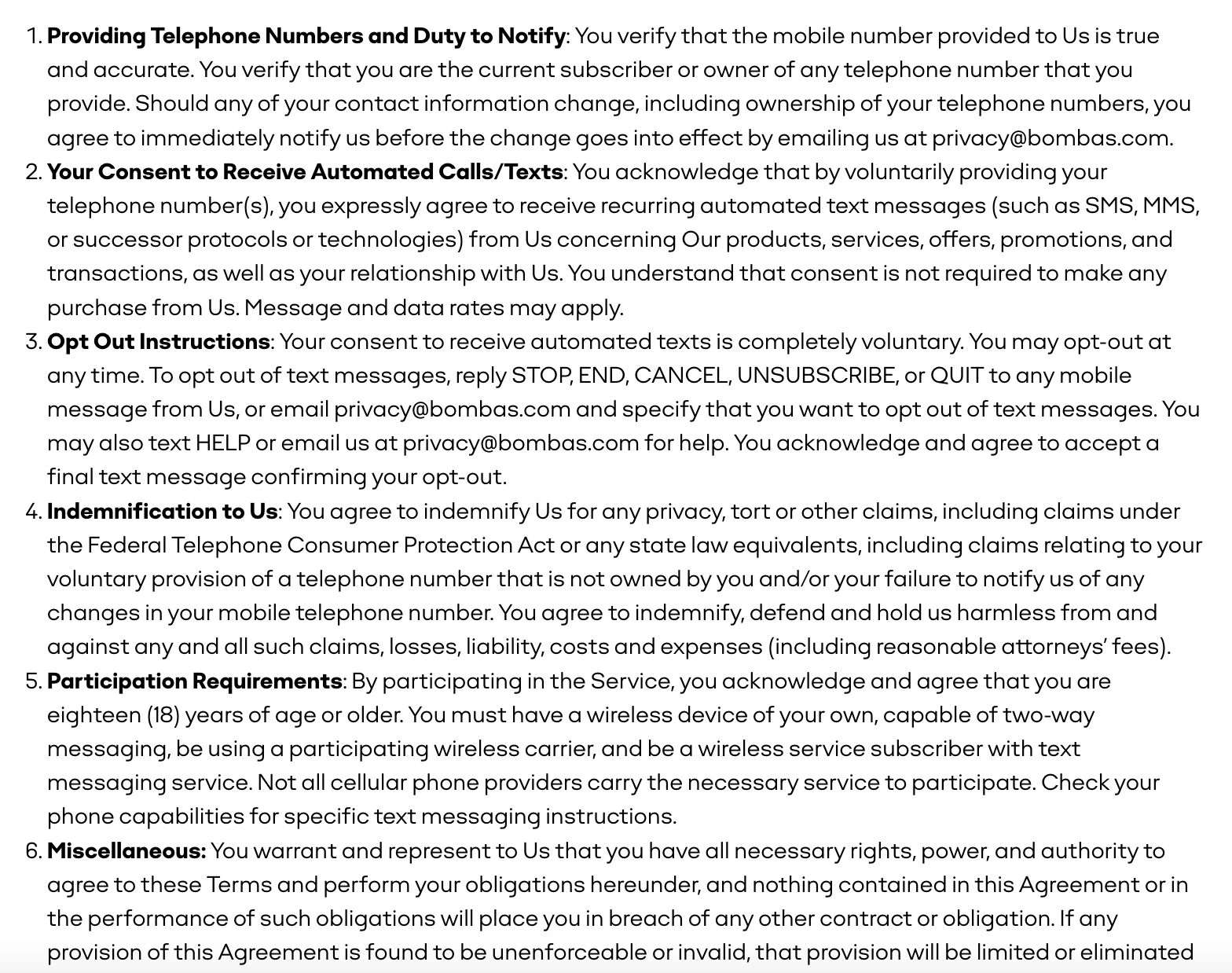
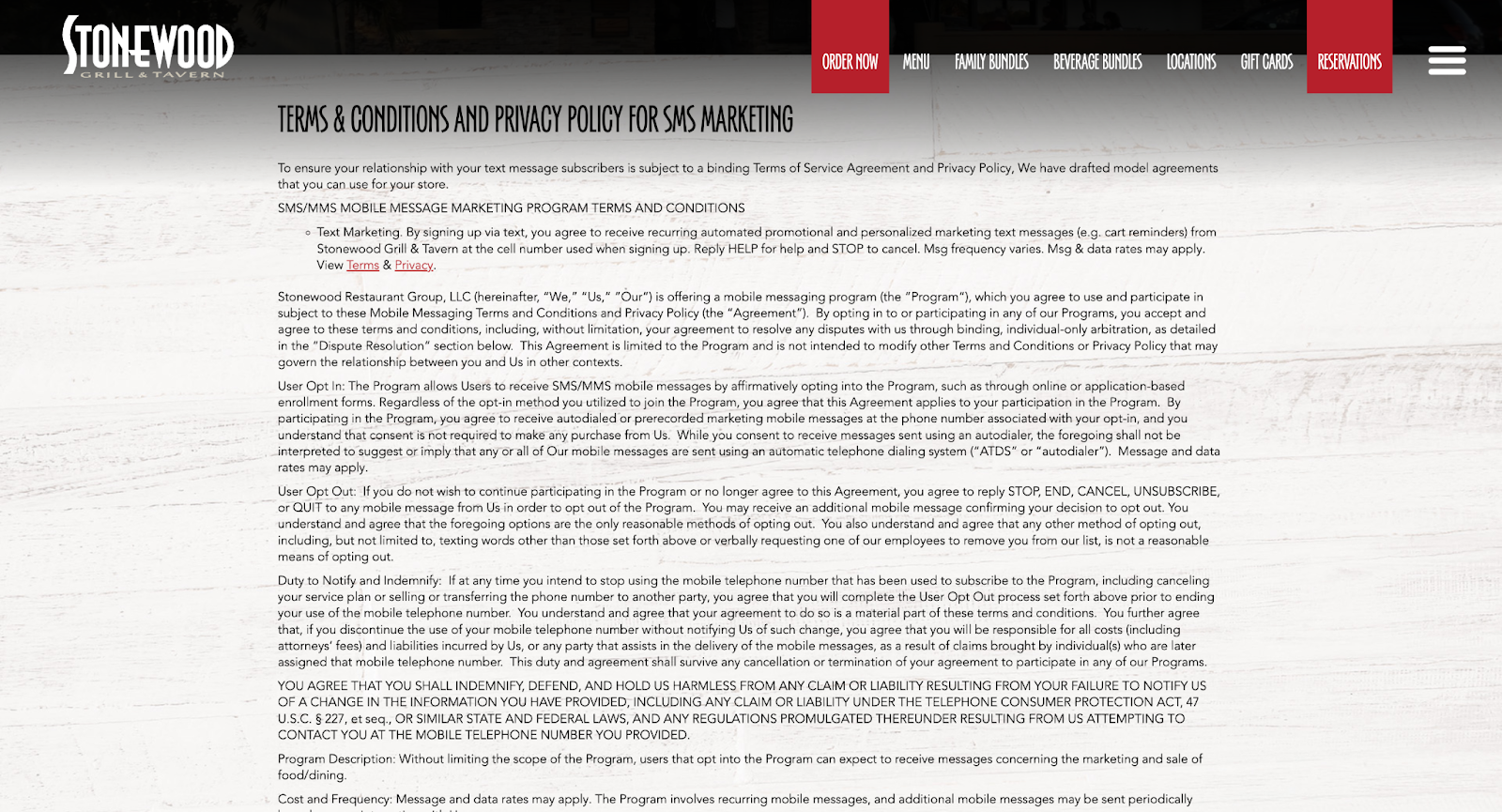
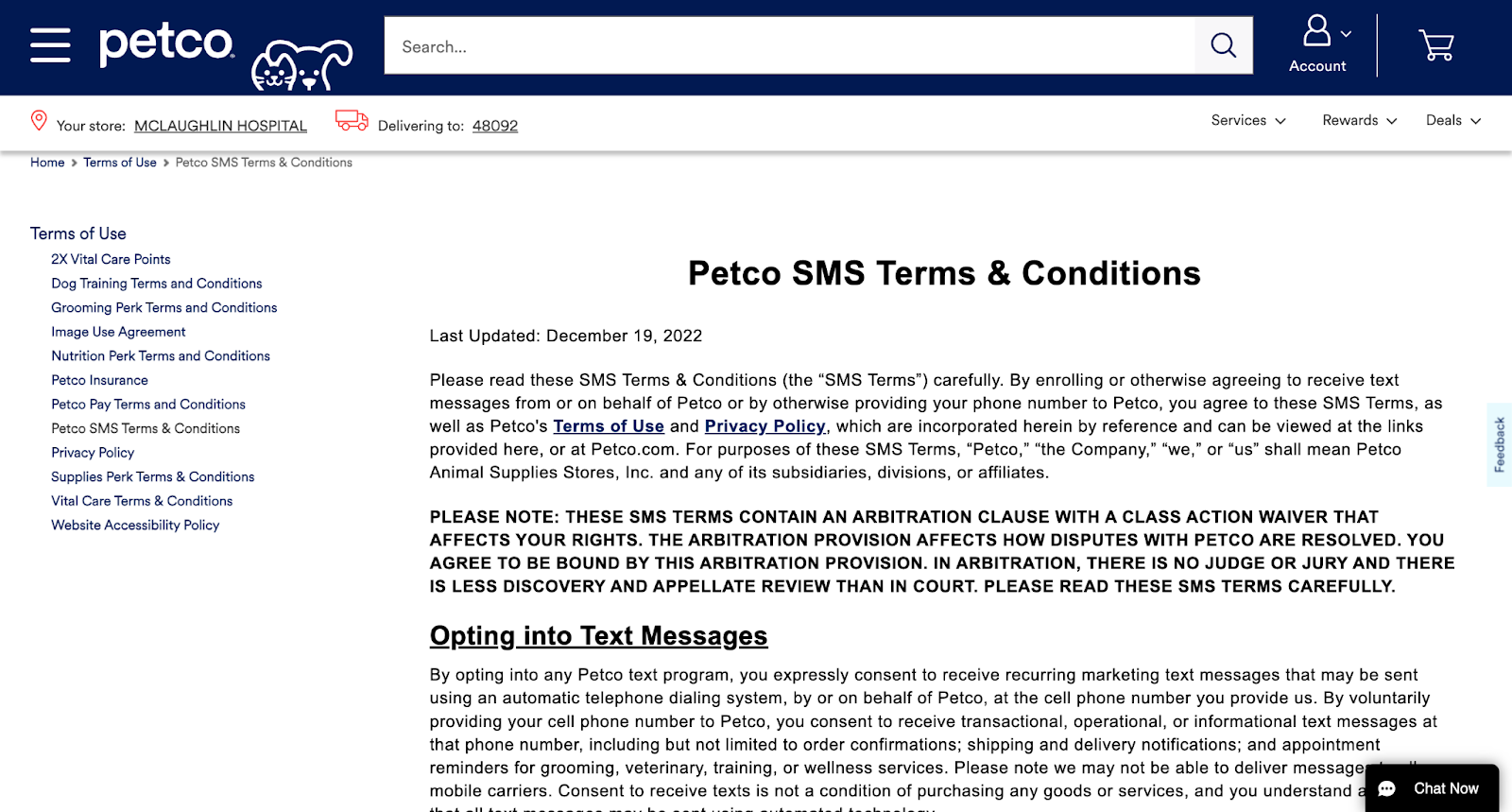
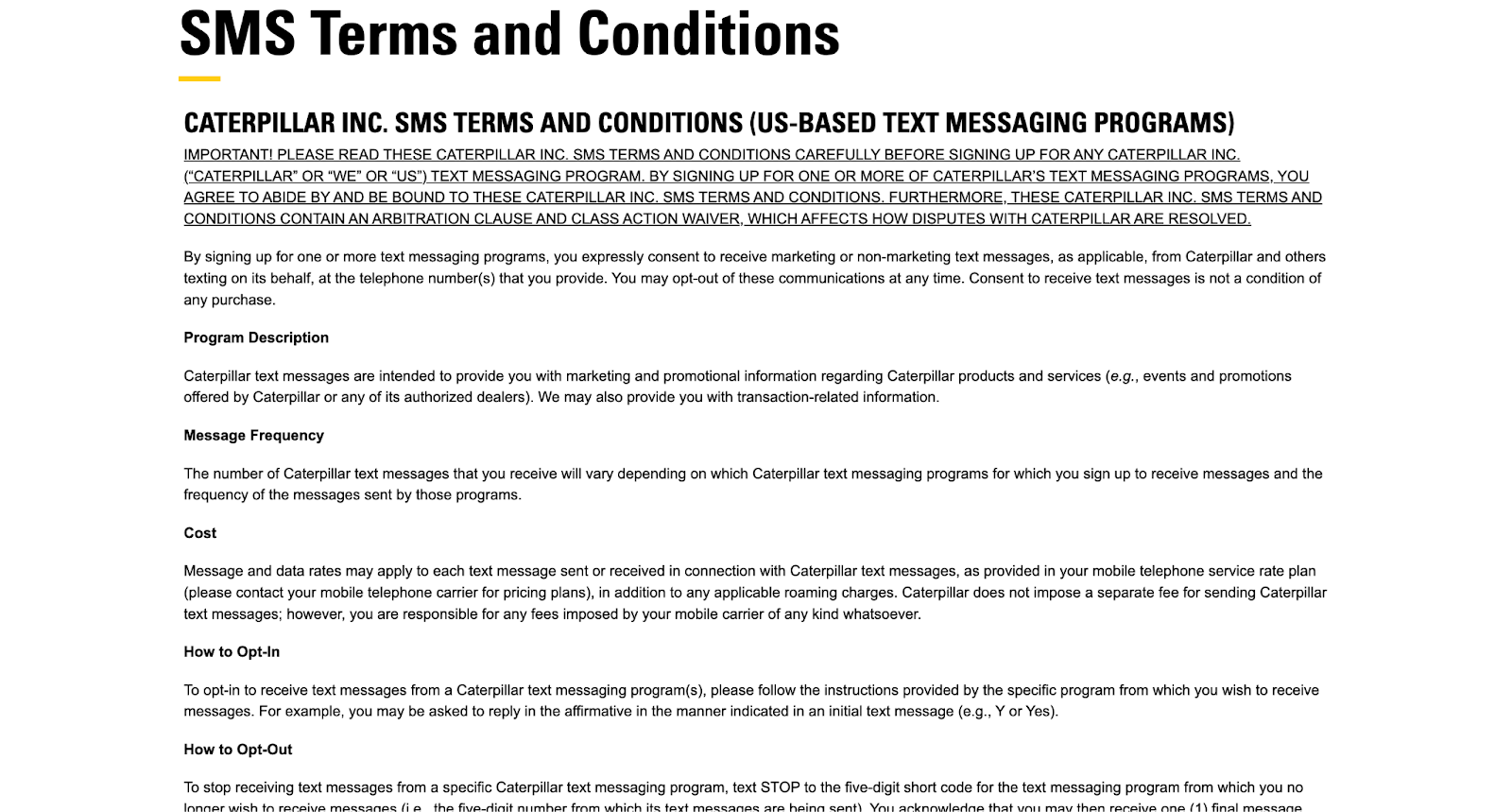
Here’s a link to an example terms and conditions document. This example is what your audience would see if they clicked from the SimpleTexting web form to subscribe to your program.
Here are some reasons to have an SMS terms and conditions doc before you start collecting contacts.
As mentioned earlier, several organizations and laws require you to have terms and conditions. Creating one helps you stay compliant and avoid trouble with the law.
Your terms and conditions should explicitly include your SMS marketing practices. That way, customers know what to expect before accepting your terms and conditions.
You can set expectations around the frequency of messages, how customers can opt-out from receiving your messages, possible fees, and other details.
When customers are unhappy with your message or its delivery, you’ll have more protection from liabilities if you have a terms and conditions agreement than when you don’t.
A warranty disclaimer, if included in your terms and conditions agreement, also limits your liabilities if your SMS marketing messages are found to be erroneous.
A terms and conditions agreement protects your content and ensures that customers cannot claim your images, videos, and other forms of media as theirs.
The agreement informs customers that intellectual property laws protect your content.
When customers know how you operate, thanks to the terms and conditions agreement, they’ll tend to trust you more.
⚠️ This advice is for informational purposes only and is neither intended as nor should be substituted for consultation with appropriate legal counsel and/or your organization’s regulatory compliance team.
© Copyright 2024 SimpleTexting, LLC
One North Wacker, Suite 2500
Chicago, IL 60606
Mon-Fri 8 a.m.-12 a.m. ET
Sat-Sun 10 a.m.-5 p.m. ET
Mon-Fri 9 a.m.-9 p.m. ET
Sat-Sun 10 a.m.-5 p.m. ET
(866) 259-1887
Most people would agree cookies make life better. For us, they help us make our site and marketing better. But if you don’t like cookies, that’s cool – you can let us know by clicking the settings button!
Allow all Cookie SettingsWhen you visit any website, it may store or retrieve information on your browser, mostly in the form of cookies. This information might be about you, your preferences or your device and is mostly used to make the site work as you expect it to. The information does not usually directly identify you, but it can give you a more personalized web experience. Because we respect your right to privacy, you can choose not to allow some types of cookies. Click on the different category headings to find out more and change our default settings. However, blocking some types of cookies may impact your experience of the site and the services we are able to offer.
Cookie Statement
These cookies are necessary for the website to function and cannot be switched off in our systems. They are usually only set in response to actions made by you which amount to a request for services, such as setting your privacy preferences, logging in or filling in forms. You can set your browser to block or alert you about these cookies, but some parts of the site will not then work.
These cookies do not store any personally identifiable information.
These cookies allow us to count visits and traffic sources so we can measure and improve the performance of our site. They help us to know which pages are the most and least popular and see how visitors move around the site. All information these cookies collect is aggregated and therefore anonymous.
If you do not allow these cookies we will not know when you have visited our site, and will not be able to monitor its performance.
These cookies may be set through our site by our advertising partners. They may be used by those companies to build a profile of your interests and show you relevant adverts on other sites. They do not store directly personal information, but are based on uniquely identifying your browser and internet device.
If you do not allow these cookies, you will experience less targeted advertising.